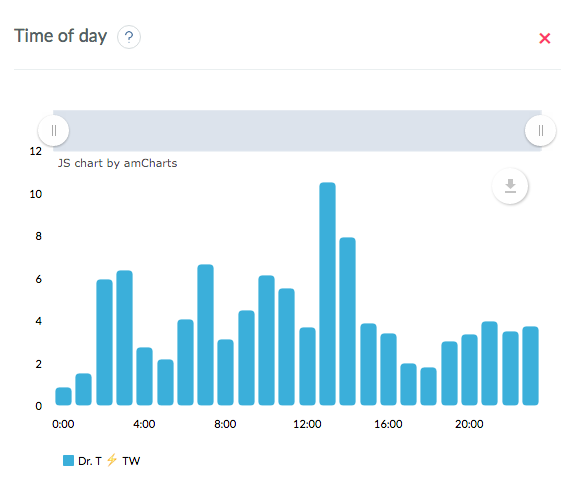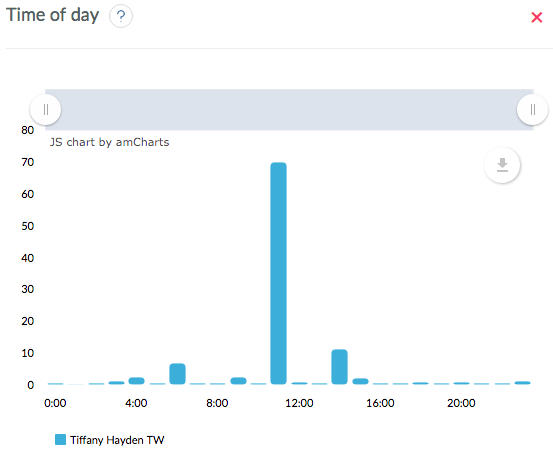The moment I posted my first piece about Ripple and XRP, my Twitter feed became flooded with rebuttals, counter-arguments, and plain old insults. I discovered that most of these messages came from a group of Twitter accounts who identify themselves as the “XRP Army”. I became so fascinated by their tactics and energy, that I decided to dedicate a whole investigative piece to this curious group of crypto fanatics.
Who is the XRP Army?
When I first wrote about Ripple, I didn’t expect much of a reaction from the crypto community. The post, “Ripple’s “200+ Institutional Clients” Claim Is A Scam“, was pretty straightforward: a little bit of research, common sense, and fact-checking. Little did I know that it would cause such a stir.
The post got a lot of traction, which was pretty cool:
Not a single one of Ripple’s clients appears to be real, or an actual client.https://t.co/KM9V7awHuJ
— Trolly McTrollface (@Tr0llyTr0llFace) January 30, 2019
With over 500 likes and retweets, it got some real traction. But it also attracted a lot of criticism from people who were very pro-Ripple. They accused me of cherry-picking the data, and ignoring such amazing Ripple partnerships as Santander, BBVA, etc.
This led me to do a second post about Ripple’s partnership with Santander. The critics returned, accusing me of being a Bitcoin shill, being paid to trash Ripple, not having a girlfriend, not understanding anything about business, or simply being an idiot.
This is when I stumbled upon this piece by Coindesk: “The FUD Stompers: Like It or Not, XRP Army Is Winning Crypto’s Hashtag War“. One passage struck me:
“The XRP Army distinguishes itself mainly through scale and organization. Question another coin’s merits, and a handful of trolls might come out of the woodwork. But measured by volume, intensity, duration and consistency, the attack will pale in comparison to an XRP Army operation.”
coindesk.com
The XRP Army is resourceful indeed. As my third and fourth posts about Ripple were published, the intensity of their attacks grew out of proportion. My Twitter mentions became a torrent of bile and vitriol from accounts I’d never seen before. And it was nothing compared to the tsunami of hate that Frances Coppola had to face after tweeting a link to my piece on David Schwartz. Frances, I later discovered, is the XRP Army’s enemy number one.
XRP Army’s main weapons are:
- ad hominem attacks
- taking the author’s words out of context
- lying about what the author actually said
- not knowing what they’re talking about
- sheer numbers
Combining these social weapons together, the XRP Army will simply burry its target under an avalanche of biased and false statements, insults and threats, making up for what it lacks in brains with volume.
Sun Tzu’s “The Art of War” says, “If you know the enemy and know yourself, you need not fear the result of a hundred battles.” So I decided to learn more about the XRP Army. These are the results of my investigation.
Crawling Twitter
Most of the XRP Army’s activity happens on Twitter. As a consequence, most of their activity: tweets, retweets, relies, and likes, is public for everyone to see.
First, I tried to apply for an access to Twitter’s Developer API, to be able to access Twitter data using Twitter’s own interface. After waiting a couple of hours without an answer, I googled “how long does it take to receive a Twitter API key”, I understood that the whole procedure could take weeks.
Crap.
So, I decided to write my own crawler. After a couple of tests, it appeared that Twitter doesn’t have that many safeguards against crawlers, and even a simple PHP script without cookie and session support was good enough to retrieve a throve of information.
This was my process:
- Start with a Twitter handle, let’s say @haydentiff.
- Parse the tweets in the feed that Twitter provides in plain HTML.
- Open every tweet with its id, and parse all the preceding and following tweets in the conversation, adding them to the queue of tweets to parse.
- Retrieve likes and retweets for every tweet, adding their accounts to the queue of accounts to parse, by downloading the JSON snippet at (https://twitter.com/i/activity/favorited_popup?id=”.$tweet_id).
- Iterate for every account and tweet in the queue that’s not been parsed yet.
N.B.: Twitter limits the amount of data one can access. For example, the “likes” and “retweets” on a every tweet are limited to the first 25 accounts that liked or tweeted. These limitations make it marginally harder to exploit the data, in no small part because the XRP Army is so active that a lot of their tweets and comments receive more than 25 likes or retweets.
I waited for 100,000 data points (tweets, retweets, likes, and comments) to start looking into the data.
Identifying the soldiers of the XRP Army
To filter out the soldiers of the XRP army out of the more than 20,000 accounts that I came up with, I applied a very simple algorithm of unsupervised clustering. I computed the closeness of every pair of accounts by counting the number of retweets, replies, and likes by these accounts on one another’s tweets. Then, I sorted the pairs of accounts by closeness, and built clusters of accounts by iteratively grouping together accounts that were close, and not already in different groups.
The clustering part is important. Accounts can be pro-Ripple, but not belong to the XRP Army.
Without much surprise, the closest accounts, i.e. those who interacted the most with each other’s content, were @haydentiff and @XRPTrump. These are truly the generals of the XRP Army, both producing an incredible amount of XRP-oriented content and interactions.
Some have even suggested that Tiffany Hayden and Mr T. are actually one and the same person, but that doesn’t appear to be the case. In fact, using Popsters, I can pretty safely assume that Mr T. is actually a group of people (or someone who barely sleeps):

… while Tiffany Hayden has a much more human-like behaviour:

The other notable accounts in the same group were (with their amount of tweets, retweets, comments and likes from the dataset):
- @haydentiff (692 interactions)
- @XRPTrump (543 interactions)
- @Hodor (235 interactions)
- @Vkumzy (208 interactions)
- @dmunafo (174 interactions)
- @Dave_Jonez_02 (171 interactions)
- @_Varkeer (146 interactions)
- @JoelKatz (138 interactions)
- @DiscordinCrypto (136 interactions)
- @XRPisVelocity (131 interactions)
- @hastytoro (129 interactions)
- @WietseWind (125 interactions)
- @The_Mainlander (124 interactions)
- @drkarajan (96 interactions)
- @TimeFlexer (93 interactions)
- @makie48 (93 interactions)
- @medinacerecero (93 interactions)
- @bukiki1001 (92 interactions)
- @XrpBoy (80 interactions)
- @BGIradji (77 interactions)
- @robblown454 (76 interactions)
- @XrpHK (76 interactions)
- @PtimeXr (73 interactions)
- @CryptoJikky (73 interactions)
- @auditmeplease (73 interactions)
- @XRP_Var_Emreis (67 interactions)
- @jeremy_87110 (65 interactions)
- @TheRipplerIAm (61 interactions)
- @ManuelittoC (59 interactions)
- @HoyaCritic (58 interactions)
- @boyd_oakes (58 interactions)
- @kryptonian_23 (56 interactions)
- @crypto_Prothean (55 interactions)
- @hussamsw1 (54 interactions)
- @XRPNews_ (53 interactions)
- @OriginalHodler (51 interactions)
- @SaturnOrBust (51 interactions)
The XRP Army in numbers
Together, the members of the XRP Army identified by my clustering algorithm, had produced 32 tweets, 1998 retweets, 2264 likes, and 1986 replies, from a dataset of 100,000 data points.
Yes, you’ve read that right: less than 1.5% of the content the XRP Army produces are original tweets. They are very rarely initiators of a thread, electing instead to jump in on existing discussions. This is exactly what has happened to me, when soldiers of the XRP Army just leeched on my original tweets, and buried me under an avalanche of replies, and retweets and likes of their own replies.
The ratio of retweets/likes is suspiciously high. Usually, Twitter users are 3 to 4 times more likely to “like” than to retweet. XRP soldiers, however, retweet anything and everything, especially their own replies (check out Tiffany Hayden’s or Dr T.’s full feeds). They use the “retweet” so much because so little of their content are original tweets, and Twitter’s algorithms tend to hide replies and likes.
The language used by the XRP Army is very basic. I used this text analyser, where I submitted an aggregate of the XRP Army’s tweet content. The language used was determined to have an IELTS Level of 6.5-8, which, given the specificity of talking crypto’s language, is pretty low. The language level score is pumped up by rare words, and there were a lot of those in the top 100: xrp, twitter, ripple, xrptipbot, xrpcommunity, bitcoin, btc, crypto, haydentiff, xrpthestandard, xrptrump.
All these methods are directed at having the maximum impact, by broadcasting a simplistic and easy-to-understand message to the wider community.
One thing that surprised me most, is that I found no evidence of bot activity. The amount of human work, as shoddy as it might be, that the XRP Army is ready to invest in their mission to destroy all Ripple - related criticism, is just mind-boggling. This makes it very hard for Twitter to police their activity: they are genuine accounts, run by real people, who are simply ready to waste incredible amounts of time producing low-quality content.
Then again, maybe they’re just not smart enough to use bots.
Where fo we go from there?
Frankly, I don’t know. I’m bracing to get buried under a tsunami of generic abuse and scorn. Maybe my next post will simply be a compilation of the XRP Army’s funniest insults.


You have way too much time on your hands bro. Maybe get a job? Are you really so triggered by followers of a cryptocurrency that you feel compelled to churn out blog after blog to vent your rage? LOL.
And just to confirm all of your work, the first comment fits perfeclty on those pathethic retards you have studied in this article.
Nice article showing how radical, blind and pathethic a human can be when they desperatly trying to justify himself without anything to support their believes.
Thanks for the research.